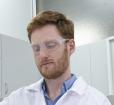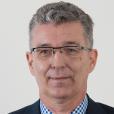
Showing 301 - 320 of 856 results
Synroc: Australian innovation increases technology readiness for waste treatment plant
International experts looking at the nuclear power technologies for the future met in Sydney
ANSTO hosted an international meeting of Expert and Policy group members for Generation IV Forum (GIF).

Role at ANSTO
Quantum science underpins modern science and technology
Quantum theory explains the strange and unpredictable behaviour of subatomic particles and the smallest amounts of energy.
Collaboration locates elusive oxygen ions in new solid electrolyte
ANSTO’s course elevates nuclear literacy across Government staff
An accomplished international photographer has capture dazzling new images of one component of the main ring at our Australian Synchrotron and provided an inside view of the electron’s path when it is used.

6MV Sirius Accelerator
The 6MV tandem accelerator, named SIRIUS, is instrumented with a wide range of AMS, IBA and ion irradiation facilities. The three ion sources include hydrogen and helium sources, and a MC-SNICS sputter source for solid materials.
Dynamic real-time video captures how surfaces are modified by nuclear techniques

Role at ANSTO

Role at ANSTO

Meg is an engineer with a Bachelor of Engineering (Honours) from the Australian National University, where they specialised in material and mechanical systems and biomedical systems.

Role at ANSTO
Dr Meng Jun Qin is a materials scientist with expertise in computer modelling
ANSTO Minerals shares expertise at international workshop

Role at ANSTO
Champions are accelerating progress in the empowerment of women
Australian planetary scientists congratulate NASA after Juno enters Jupiter's orbit

Actinide and heavy ion isotopic analysis
ANSTO has the capability to analyse heavy isotopes such as 129I, platinum group elements, 236U and Pu isotopes.

Role at ANSTO
Graduate profile - Matthew Teusner
Materials researcher with a passion for chemistry, Matthew Teusner is investigating lithium sulfur materials to support the next step in cleaner battery power.